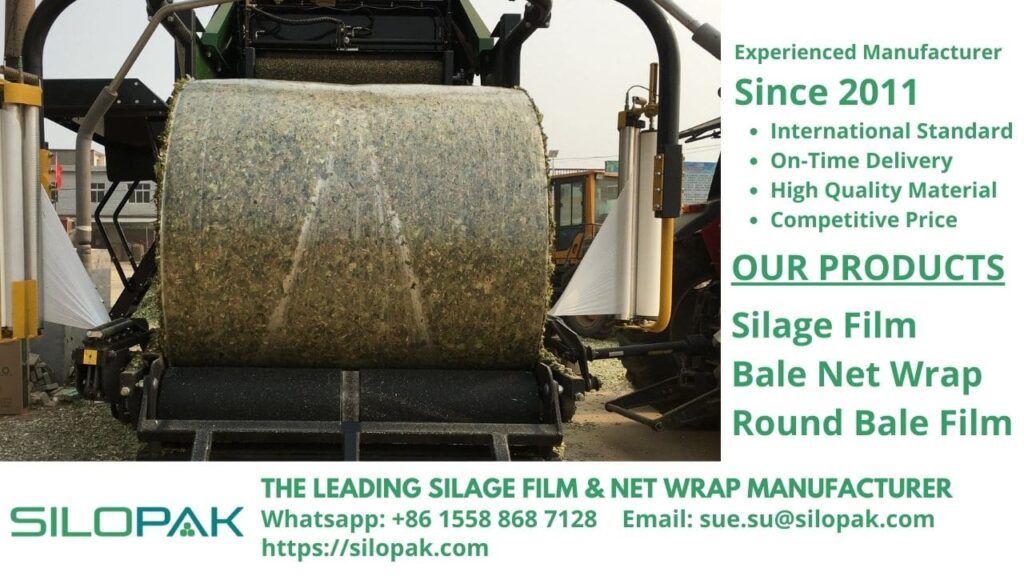
Insight into what is fermentation is essential when you are serious about producing the best quality silage. No matter how much silage you want to make, the fermentation process largely determines the nutritional content and taste of the silage. This not only allows your livestock to enjoy feed in the dry season but also gets nutrition and improves their digestive system.
Fermentation related to making silage is mandatory knowledge for all breeders. This will later be related to silage-making techniques, selecting the best silage film, as well as time management and transportation of silage to improve the fermentation process.
In this article, let’s comprehensively discuss what is fermentation, and all the important facts about fermentation in silage.
contents
What is Fermentation in Making Silage?
Fermentation can occur anywhere, and it can even be engineered according to the interests of the maker. Specifically for silage production, this is a process of decomposing organic compounds, in this case, fresh grass and fodder, by micro-organisms, resulting in optimal nutrition and energy by blocking contact with oxygen.
Making silage is a way of procuring animal feed on a large scale so that livestock can still get enough nutritious food in the dry season and still be cost-effective. Silage that has been wrapped in silage film or stored in an airtight room will go through a fermentation process, and then it can be stored for 3-6 months.
How Silage Fermentation Works
Fermentation starts as soon as the grass is green, and the rest of the agricultural products are wrapped using silage film from the best suppliers. This process will involve aerobic bacteria as well as processes that require oxygen. The silage maker must understand what What is Fermentation is and the phases that will take place until silage can be served to livestock in the dry season.
6 Phases of Fermentation for Making Highly Nutritious Silage
The six phases of fermentation in the making of silage are very important and must be controlled so that the process takes place perfectly. The following are the six fermentation phases that must be passed through the silage bale so that they can be harvested and served to livestock in good condition:
Phase 1
This is the phase where the grass and crop residues are cut, compacted, and then wrapped in silage film. In this process, the grass is isolated so it cannot come into contact with oxygen. Instead, heat, water, and carbon dioxide are generated in the bales. The proper packaging will determine the maximum stage 1 fermentation process. You can work with the best supplier to get silage film that is tear-resistant and can prevent straw bales from being exposed to sunlight.
Phase 2
What is fermentation in this phase? The next stage of the fermentation process lasts about 24 to 72 hours. Bacteria begin to appear and produce lactic acid, which is important for the digestive health of livestock. The success of phase 2 depends on the maturity level of the plants, humidity, and the population of bacteria that naturally occur in the bales.
Phase 3
In this phase which lasts for about 24 hours, certain types of bacteria work to lower the pH of the forage while still producing a balanced lactic acid. It is better if the bale is kept protected from sun exposure and in stable condition.
Phase 4
What is fermentation in this phase is still a continuation of the previous phase. When the fermentation process is going well, the lactic acid in the silage ideally reaches more than 65 percent of the total fatty acids. Fermentation time for phases 2, 3, and 4 will last for 10 days to 3 weeks after wrapping and bale making.
Phase 5
The fermentation process at this stage is relatively stable when oxygen cannot reach the bales. Selection of the right silage film is very important so that all stages of fermentation in silage are successful. You also have to use special tools and machines to support a fast and effective work process.
Phase 6
This is the feeding phase, where silage can be served to livestock after a storage period of 3-6 months. Farmers can usually predict the arrival of the dry season, and the silage will soon be opened to be served to livestock.
Insight into what is silage is an essential part of getting good at making good silage for livestock. The fermentation process may not be detected accurately. But you can guarantee the process will run smoothly when using high-quality film silage.
Finally, cooperation with the best silage film suppliers is a wise thing that you should strive for. Be selective in choosing business partners to procure various silage packaging products such as silage film, bale net wrap, or round bale film. You also have to support the quality of silage production by procuring special machines.
An easy way to ensure product quality is to choose a supplier who is experienced and has a good and satisfying business track record. As a business partner in making silage, the company you choose should also be able to provide further information about anything related to making silage.
